Mignet HM-14 Pou de Ciel

Brengun, 1/144 scale
S u m m a r y : |
Catalogue Number: |
Brengun Kit No. BRS144023 – Mignet HM-14 Pou de Ciel |
Scale: |
1/144 |
Contents & Media: |
Nine grey resin parts, a PE fret of twenty-six parts, two clear styrene parts, and decals for two subjects. |
Price: |
Available on-line from these stockists:
Brengun €14.16 (Incl. VAT)
Hannants £10.17
Modelimex €11.57
For currency conversion click here |
Review Type: |
First Look. |
Advantages: |
Good quality and the only Pou de Ciel in this scale. |
Disadvantages: |
None noted. |
Conclusion: |
With care and patience I think a fine little model should result from this good quality kit. It is certainly different as subject choices goes, and should make for a great contrast sat next to 1/144 Jumbo or other large multi-engine model. Recommended. |
Reviewed by
Mark Davies

Sword's 1/72 scale Ki 44 Shoki is available online from
Squadron.com
The Flying Flea (Pou du Ciel literally "Louse of the Sky" in French) is a large family of light homebuilt aircraft first flown in 1933.
The odd name comes from the French nickname for the Ford Model T automobile, "Pou de la Route" or "Louse of the Road" because Henry Ford's economy car was so common and initially came only in black. Henri Mignet dreamed of creating a Model T of the air, an airplane for the common man, hence "Pou du Ciel." In the English translation, the term became "Flying Flea." Originally applied only to the HM.14 model, the name has now come to describe the family of aircraft of similar configuration designed by Mignet and others.
In 1933, Mignet successfully flew for the first time in his HM.14, the original flying flea, and publicly demonstrated it. In 1934, he published the plans and building instructions in his book Le Sport de l'Air. In 1935, it was translated into English in Britain and serialised in Practical Mechanics in the USA, prompting hundreds of people around the world to build their own Flying Fleas.
Mignet's original HM.14 prototype aircraft was powered by a 17 hp (13 kW) Aubier-Dunne 500 cc two stroke motorcycle engine. It had a wingspan of 19.5 feet (5.9 m), a length of 11.5 feet (3.5 m) and a gross weight of 450 lb (204 kg). It had a usable speed range of 25-62 mph (40–100 km/h). In the UK in 1935 and 1936, many aerodynamic and engine developments took place, notably by Stephen Appleby, John Carden and L.E. Baynes.
Despite the initial popularity of the design, thanks in no small part to the passionate enthusiasm of Mignet himself, the original HM.14 revealed design flaws that could lead to an unrecoverable and often fatal dive under certain conditions. Studies in the UK and France revealed the problem (the HM.14 was small enough to fit in wind tunnels in both countries usually used for scale models of larger aircraft) and corrections were made to the design.
Unfortunately, the wave of bad publicity created by the crashes dogged Mignet for the rest of his life and he continues to be associated with the design today despite the fact that the basic Mignet configuration has proven to be safe in hundreds of successful homebuilt aircraft and factory built microlights.
Source: Wikipedia
I am only aware of one previous Pou de Ciel kit, and that was to 1/72 scale by Aeroclub. I hope that 1/144 scale modellers welcome this latest Brengun release.
The kit comes in a very small end-opening box with a photo image of the finished but unpainted model.
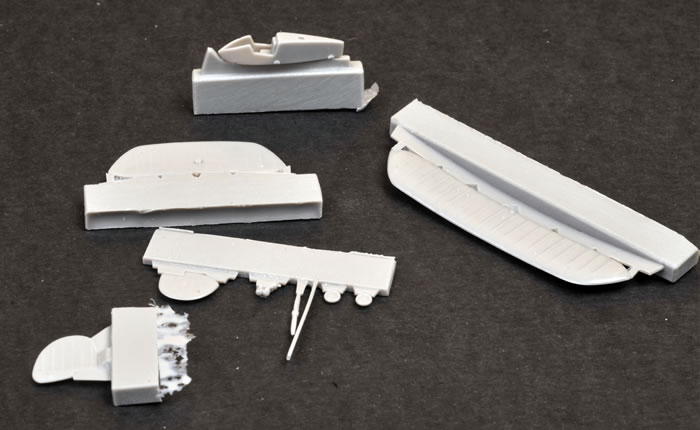
The box has two cellophane bags, one containing the nine resin parts and the other a PE fret and tiny decal sheet.
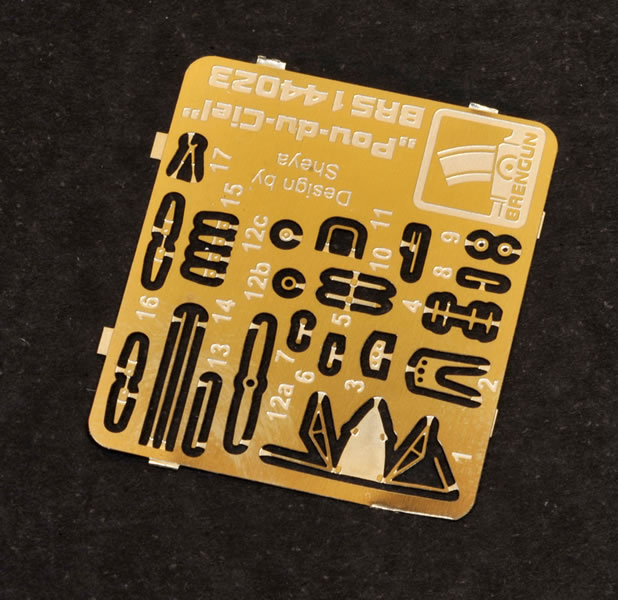
These items all appear to be of good quality.
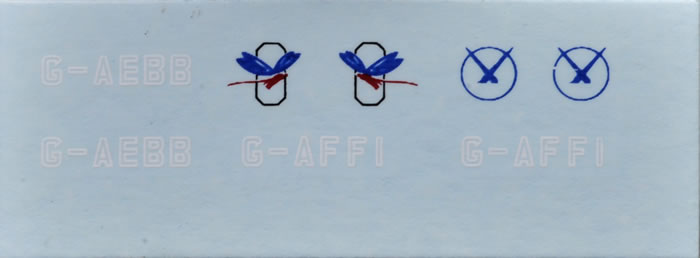
The instructions are in Czech and English, include a parts map, and use adequate assembly diagrams.
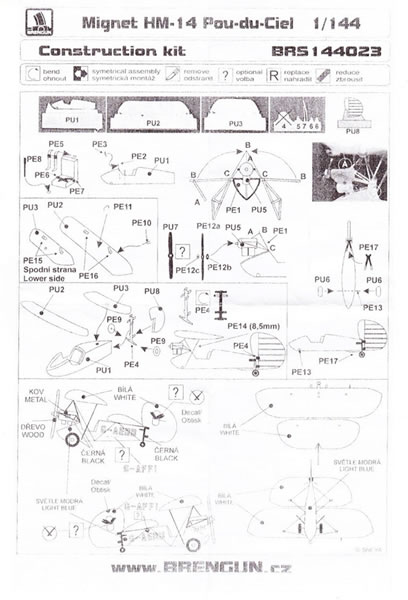
Reference to online photos or drawings may also prove helpful in determining the strut arrangement. The challenge with this kit will coping with the very small parts, and taking care not to accidently damage the very fine PE struts and other parts.
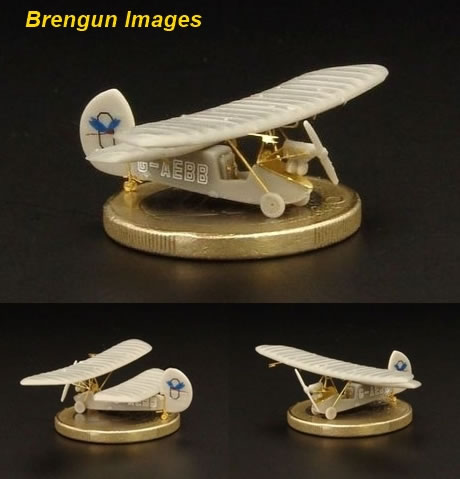
The decals provide a choice of two British registered machines, both with white wings and light-blue fuselage. These cover the white registration numbers and a blue graphic for the tailfin in each case. A quick search of the web will reveal all manner of colourful variations. But be are there many versions of Pou de Ciel, with different power-plants and airframe variations.
With care and patience I think a fine little model should result from this good quality kit. It is certainly different as subject choices goes, and should make for a great contrast sat next to 1/144 Jumbo or other large multi-engine model.
Recommended.
Thanks to Brengun for the review sample.
Review Text Copyright © 2015 by Mark Davies
Page Created 26 February, 2015
Last updated
26 February, 2015
Back to HyperScale Main Page

|
